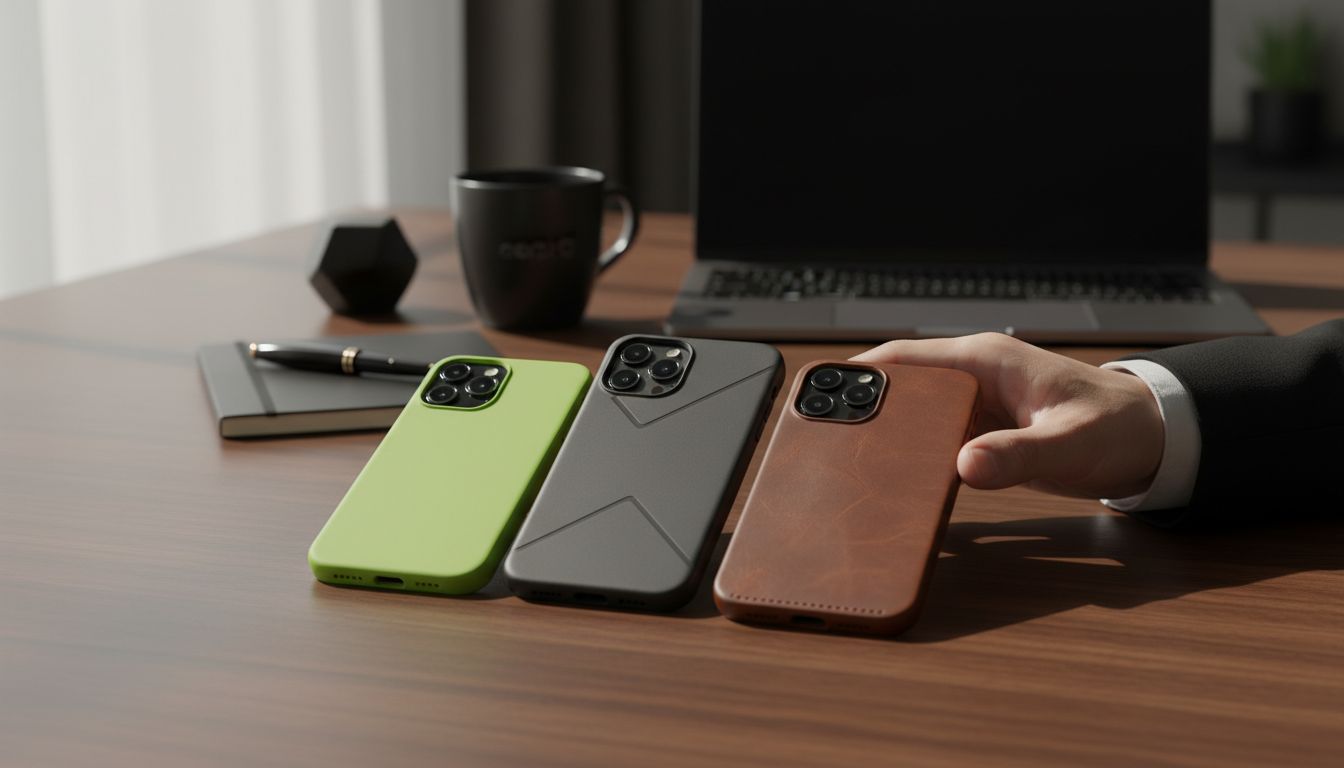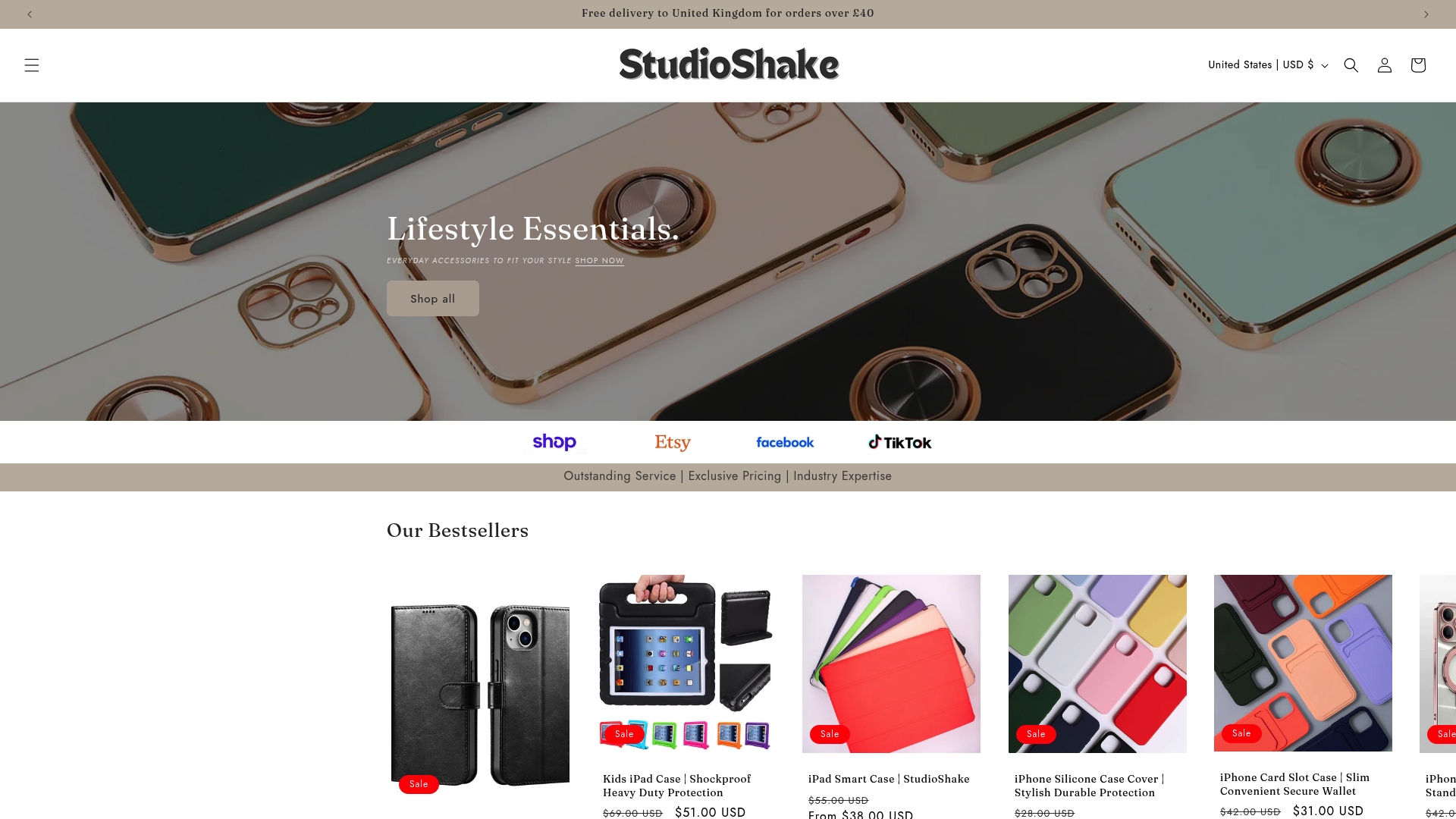
Guide to Phone Case Materials: Choose the Best Fit
Share
Choosing the wrong phone case can leave your device at risk, with over 40 percent of smartphone users reporting accidental damage each year. Our phones go everywhere with us and face drops, scratches, and spills daily. The right protection depends on your habits, work environment, and personal style. This guide helps you cut through the noise and find the best case by breaking down what actually matters for real-life use.
Table of Contents
- Step 1: Assess Your Device And Protection Needs
- Step 2: Explore Available Phone Case Materials
- Step 3: Compare Benefits Of Each Material
- Step 4: Select The Right Phone Case For Your Lifestyle
- Step 5: Verify Quality And Fit Before Purchase
Quick Summary
| Key Point | Explanation |
|---|---|
| 1. Assess protection needs wisely | Evaluate your daily activities to determine the level of protection required for your device. |
| 2. Understand phone case materials | Different materials like silicone, rubber, and plastic provide distinct benefits; choose based on what matters to you. |
| 3. Match case to lifestyle | Select a case that fits your everyday routine and personal style, ensuring it offers necessary protection. |
| 4. Verify quality and fit | Ensure the case is compatible with your phone model, checking for precise fitting elements like cutouts and button covers. |
| 5. Consider shock absorption capabilities | Look for materials like silicone which excel at cushioning devices during accidental drops, particularly for active users. |
Step 1: Assess your device and protection needs
Before selecting a phone case, understanding your specific device protection requirements is crucial. According to the UK Home Office, consumers should evaluate seven key areas when considering mobile device protection.
Start by examining your lifestyle and daily usage patterns. Are you frequently outdoors? Do you work in environments with potential physical risks? Professionals in construction, healthcare, or active outdoor roles might need more robust protection compared to office workers. Consider factors like drop resistance, water protection, and overall durability. The Northern Ireland Cyber Security Centre recommends assessing not just physical protection but also digital security features when choosing device accessories.
For optimal protection, create a checklist of your specific needs. This might include impact resistance for clumsy moments, scratch prevention for screen preservation, or slim design for easy pocket storage. By understanding your unique requirements, you can select a phone case that offers precisely the right level of protection without unnecessary bulk or expense. Remember: the best case is one that matches your personal usage and environment perfectly.
Step 2: Explore available phone case materials
Navigating the world of phone case materials requires understanding the unique characteristics of each option. According to the National Cyber Security Centre, selecting the right protective accessory involves careful consideration of material properties and potential security implications.
The most common phone case materials include silicone, rubber, plastic, leather, and hard polycarbonate. Each material offers distinct advantages. Silicone provides excellent shock absorption and grip, while hard plastic offers robust protection against scratches and impacts. Leather cases deliver a premium aesthetic and moderate protection, making them popular among professionals. Learn more in our guide on selecting durable phone cases to understand the nuanced differences between these materials.
When exploring materials, consider your personal priorities. Do you prioritize slim design? Maximum protection? Aesthetic appeal? The National Cyber Security Centre recommends assessing not just appearance, but also the physical protective qualities of your chosen material. Rubber and silicone absorb shock better, while hard plastics resist surface damage. Your ideal case material should balance protection, comfort, and personal style seamlessly.

Step 3: Compare benefits of each material
Understanding the strengths and limitations of different phone case materials is crucial for making an informed decision. According to the National Cyber Security Centre, comparing material properties goes beyond aesthetic preferences and involves assessing comprehensive device protection strategies.
Silicone emerges as a top performer for shock absorption. Its flexible nature allows it to cushion your device during accidental drops, making it ideal for active individuals or those prone to occasional clumsiness. Hard polycarbonate cases offer superior scratch resistance and structural integrity, perfect for professionals who need robust protection without bulk. Leather cases provide a sophisticated middle ground. While offering moderate protection, they deliver an elegant appearance suitable for business environments. When weighing options, consider understanding why choose silicone phone cases for deeper insights into material performance.
The National Cyber Security Centre emphasizes that your material choice should align with your specific usage patterns. Rubber cases excel in outdoor settings, providing excellent grip and impact resistance. Plastic variants work well for minimalist users seeking lightweight protection. Your ultimate selection should balance practical requirements with personal style ensuring your device remains safeguarded without compromising on individual aesthetic preferences.
Step 4: Select the right phone case for your lifestyle
Matching your phone case to your unique lifestyle requires thoughtful consideration and strategic planning. According to the National Cyber Security Centre, protective accessories should be carefully chosen to align with individual usage patterns and personal requirements.
Professionals might prioritize sleek leather cases that complement business attire, while outdoor enthusiasts need rugged rubber or silicone options that withstand environmental challenges. Parents juggling multiple responsibilities could benefit from 7 smart tips for choosing phone cases for families in the UK to find versatile protection that balances durability and practicality. Consider your daily activities carefully consider whether you need water resistance, drop protection, or additional grip.
The National Cyber Security Centre emphasizes that lifestyle compatibility goes beyond mere aesthetics. Active individuals require cases with enhanced shock absorption, while minimalist users might prefer slim designs that offer basic protection. Your ideal phone case should seamlessly integrate with your personal routines protecting your device without compromising your individual style or functional needs.
Step 5: Verify quality and fit before purchase
Ensuring your phone case meets precise protection standards requires careful verification before making a purchase. According to the National Cyber Security Centre, consumers should meticulously assess protective accessories to guarantee optimal device security and compatibility.
Start by checking your specific phone model and comparing its exact dimensions with the case specifications. Precision matters more than you might expect. Camera cutouts should align perfectly, button covers must sit flush, and port openings need to accommodate your charging cables without restriction. For comprehensive guidance, check out the Phone Case Protection guide for UK parents, which offers detailed insights into selecting properly fitting protective accessories.
The National Cyber Security Centre recommends physical inspection whenever possible. If shopping online, carefully review product images, read customer reviews focusing on fit and quality, and check return policies. Examine material flexibility, structural integrity, and potential weak points. Remember that a well fitted case is not just about aesthetics it provides crucial protection against everyday wear and potential accidental damage.
![]()
Find the Perfect Phone Case Material for Your Lifestyle with StudioShake
Choosing the right phone case material can feel overwhelming when you want the ideal balance of protection, comfort, and style. The challenge lies in matching durability with your personal habits without adding unnecessary bulk or losing grip. At StudioShake, we understand how important it is to protect your device against everyday risks like drops or scratches while keeping your case functional and appealing.
Discover our wide selection of cases tailored to various needs including shock-absorbing silicone, sleek hard plastics, and elegant leather designs. Whether you need a robust companion for active days or a slim cover for office use explore our iPhone collection that offers diverse materials to suit every preference.

Don’t compromise on protection or style when you can have both. Browse our MagSafe range for easy-to-use magnetic cases that blend convenience with strong defence. Ready to make the best choice for your device now visit StudioShake and find your perfect phone case today.
Frequently Asked Questions
What factors should I consider when choosing phone case materials?
Choosing phone case materials involves considering shock absorption, durability, aesthetic appeal, and moisture resistance. Assess your daily activities and the level of protection you need to avoid choosing a case that doesn’t match your lifestyle.
How do I determine which phone case material provides the best protection for my device?
Evaluate the materials based on their shock absorption properties and resistance to scratches. For instance, silicone offers excellent shock absorption, making it ideal for active individuals, while hard polycarbonate provides durable surface protection.
Are leather phone cases worth it for both style and protection?
Leather phone cases strike a balance between style and moderate protection. If you prefer an elegant appearance for business settings while ensuring basic device safety, consider selecting a leather case that meets your needs without sacrificing your professional look.
How can I verify that the phone case fits my device properly?
Check your phone’s model specifications and compare them with the case dimensions. Ensure that camera openings, button covers, and port access align perfectly with your device; this ensures optimal protection and functionality.
What are the advantages of using silicone over other materials for phone cases?
Silicone provides superior shock absorption and grip, making it a top choice for those prone to dropping their devices. If you frequently find yourself in environments where your phone might take a tumble, opting for a silicone case can enhance protection against accidental falls.
How can I assess the quality of a phone case before purchasing?
Examine the material for flexibility and structural integrity and check for potential weak points. Reading customer reviews and inspecting product images can help you gauge the quality; aim to identify cases that meet your specific protection requirements.
Recommended
- How to Select Durable Phone Cases for Long-Lasting Protection – StudioShake
- 7 Smart Tips for Choosing Phone Cases for Families in the UK – StudioShake
- Role of Fashion in Phone Cases: Complete Guide – StudioShake
- How to Personalize Phone Cases: A Simple Guide – StudioShake
- Understanding the Back Cover Replacement Guide for Smartphones – buy2fix
